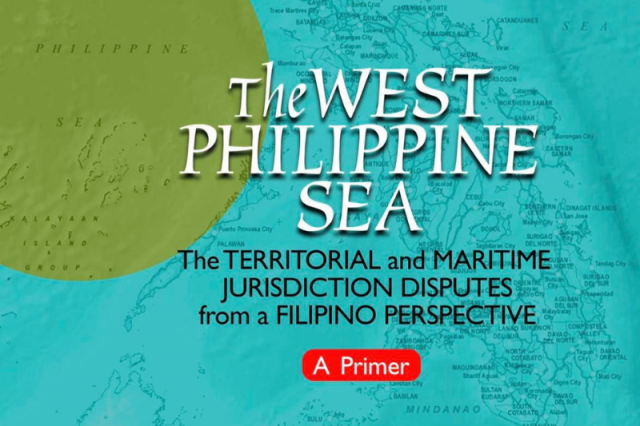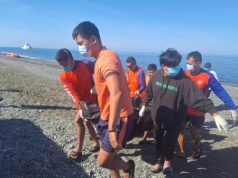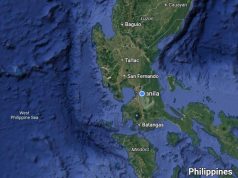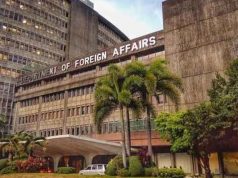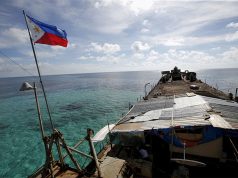A primer on the West Philippine Sea by the University of the Philippines (UP) Diliman is regaining popularity on a social media platform more than ten years after its initial publication.
“THE WEST PHILIPPINE SEA: The Territorial and Maritime Jurisdiction Disputes from a Filipino Perspective” is a free introductory guide made by the UP Asian Center and the UP Institute for Maritime Affairs and Law of the Sea that was first released in April 2013.
The pamphlet covered the general information there was available on the West Philippine Sea and the South China Sea. This was later reposted by the UP Asian Center on Facebook in 2021.
As territorial claims persisted throughout the first half of 2024, Filipinos rediscovered the primer. It eventually reached nearly 10,000 reactions and 14,000 shares on the social media platform so far.
Exploring solutions in 2013
Among the many fundamental information Filipinos need to know about the Philippines’ territorial dispute between China and five other countries on the West Philippine Sea, the writers listed down possible options to approach this situation.
UP acknowledged from the start that negotiations over the territorial dispute would take decades to agree upon. The primer stated that efforts should “achieve a win-win solution, thus ultimately requiring compromise.”
While third-party mediation like intervention by a neutral government or organization could be a possibility, it cited that there is also a chance to leave one country to be unsatisfied with the final decision.
Another strategy cited was by arbitration– a process to resolve issues done by the arbitral panel, in which case, the international court.
UP Diliman stated in the primer that “the outcomes of conciliation, mediation, or arbitration may not always be entirely satisfactory to either disputing party, but they may help defuse tensions and preserve normal ties.”
Meanwhile, aside from civilized decision-making, UP also noted that the Philippines could reclaim its sovereign rights in the territorial waters. However, they said that this method is naturally frowned upon by the international community.
Preceding actions vs now
In September 2012, late President Benigno “PNoy” Aquino III released Administrative Order No. 29 which wrote that some maritime areas located in the western part of the country are named West Philippine Sea. These include Luzon Sea near the Kalayaan group of islands and the Bajo de Masinloc or Scarborough Shoal.
In 2013, the Philippines initiated the arbitration under the 1982 United Nations Convention on the Law of the Sea (UNCLOS) dispute settlement procedures, questioning the legality of China’s claims and activities in the South China Sea.
Three years later, in July 2016, the Permanent Court of Arbitration (PCA) under the United Nations ruled in favor of the Philippines, stating that China’s nine-dash line claim over the disputed waters was invalid.
READ: 2016 South China Sea ruling remembered on PNoy’s 3rd death anniversary
Eight years later, however, China still refuses to acknowledge the historic ruling.
China Coast Guard (CGC) continues to taunt Filipino fisherfolk, scientists and the Philippine Coast Guard (PCG) with the use of force by water cannons, boat collisions, and verbal warnings, among other reports.
On Monday, following a clash between sailors last week, President Ferdinand Marcos Jr. assured the public that while the Philippines refused to fight back, this should not be seen as an admission of defeat to China.
Proposed modifications
Meanwhile, amid the developments over the West Philippine Sea, many Pinoys believed that the recirculation of the pamphlet is helpful as it educates many online users about the ongoing maritime conflict against the Philippines.
“At least makita ng mga tao na mas malaki pa sa Pilipinas ang West Philippine Sea,” a Facebook user said, referring to the primer’s map.
Some also suggested ways to improve the primer and reach more readers. They suggested adding translation.
“Worth sharing with Filipinos; how I wish there is a translation in Tagalog so more people can get a good grasp of the thorny issue,” a Facebook user said.
“Humble suggestion: if we want to reach out to a wider audience, it would be a great help if we could translate this into a simple but catchy infographic or a meme that we can easily share. This way we can reach the public,” another suggested.

